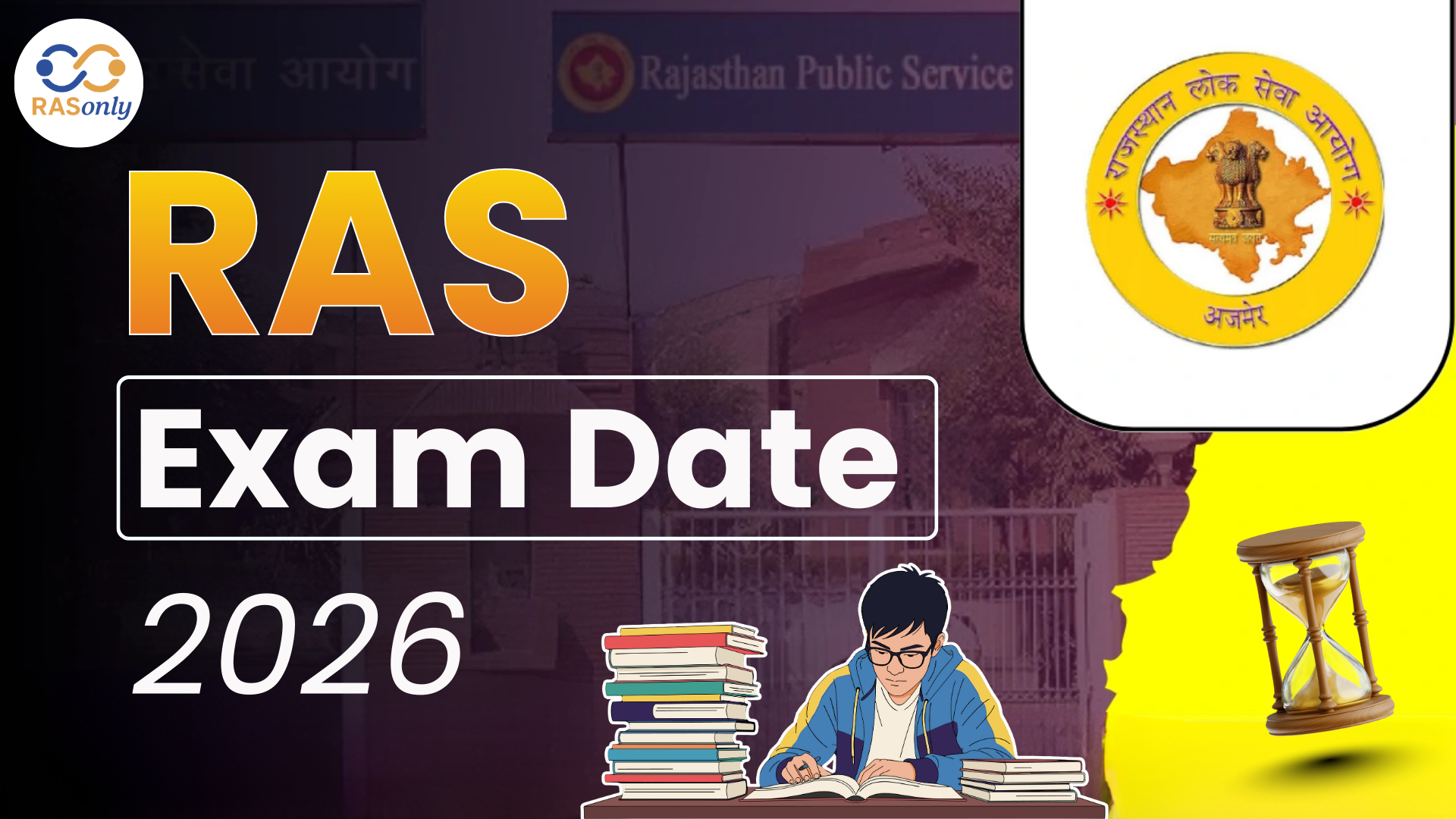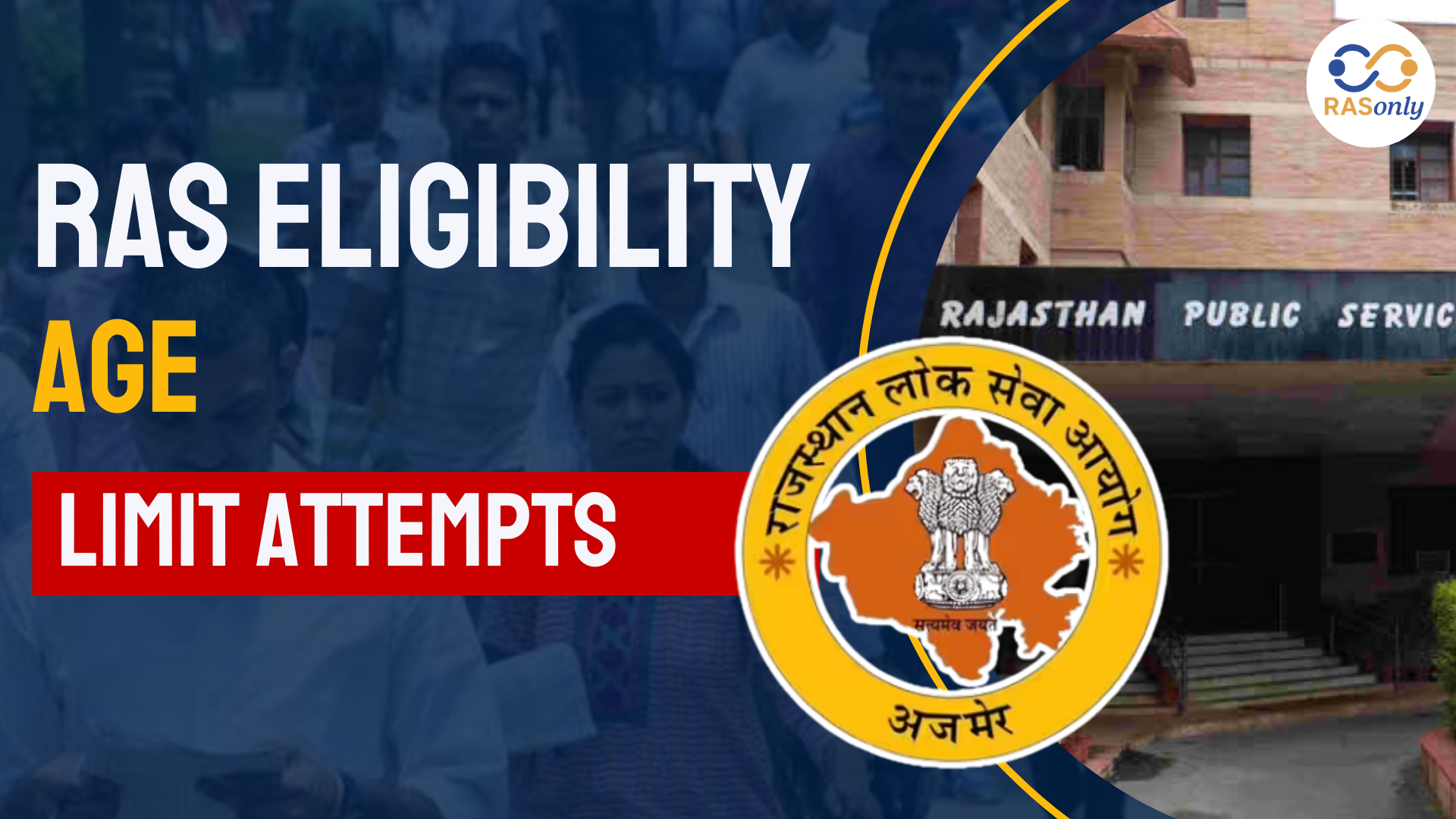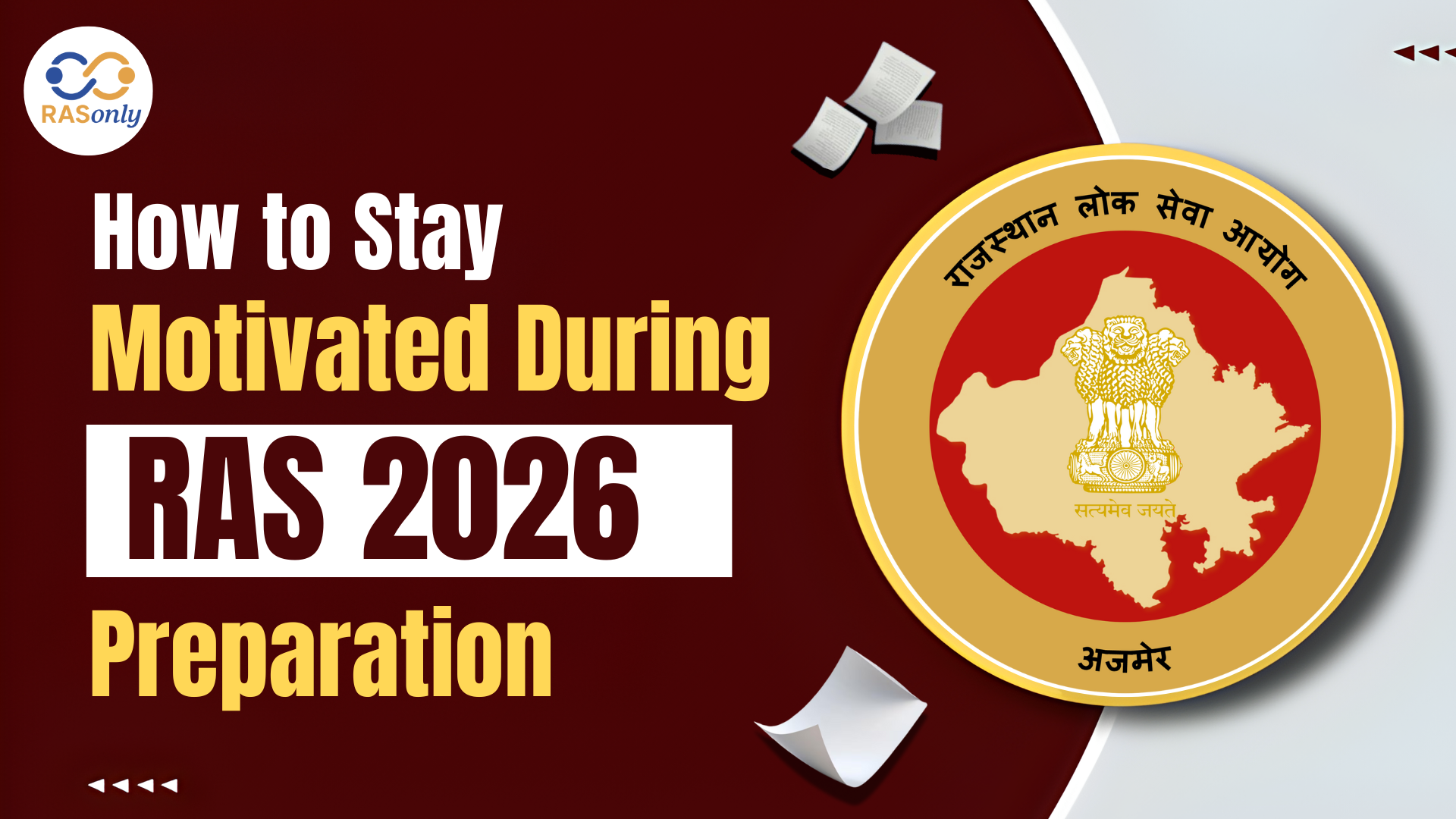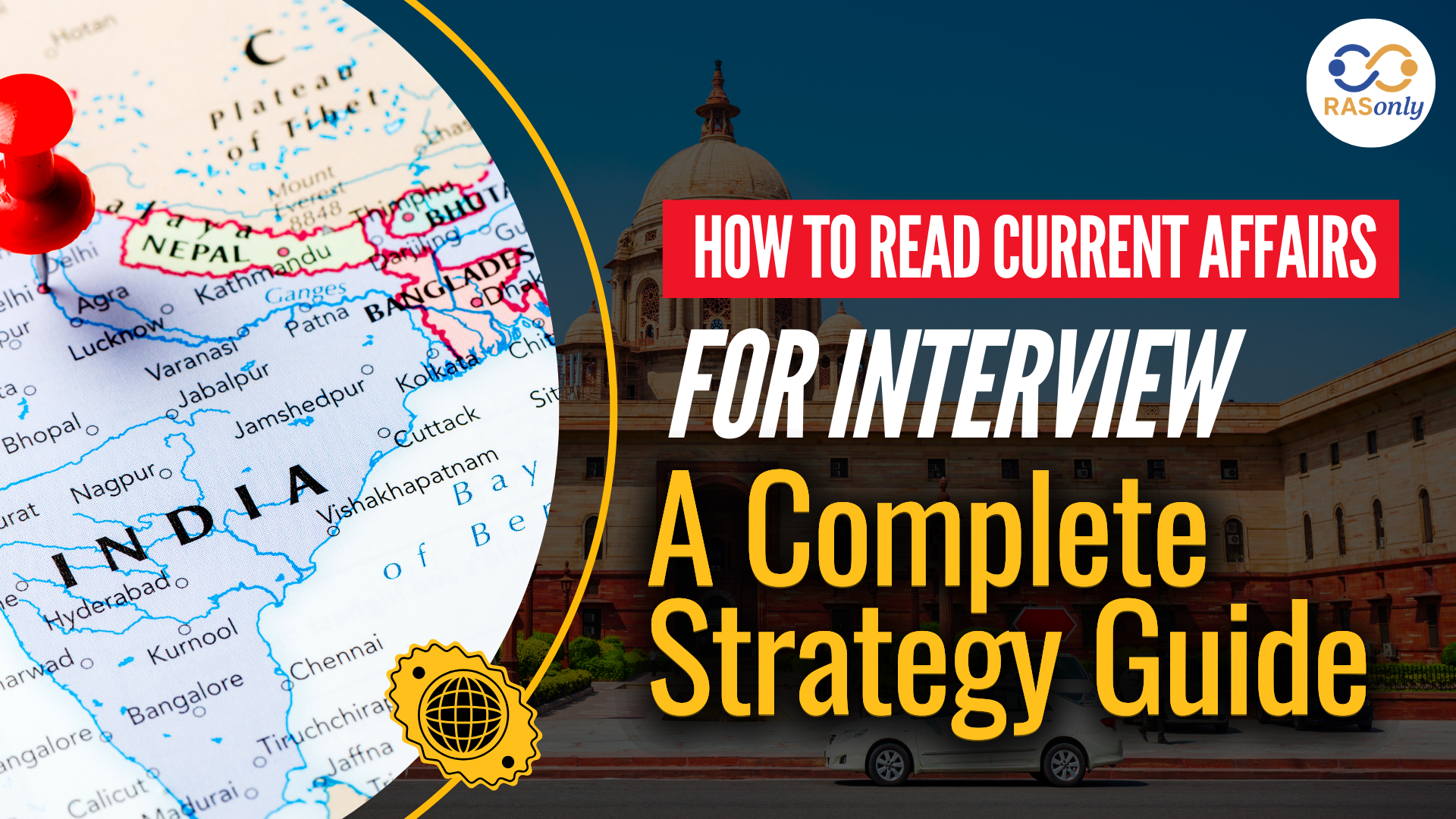RAS Exam Date 2026 for Notification, Prelims, Mains Date
- >
- RAS Preparation Resources
- >
- Ancient India Summary Notes: Quick Revision
Ancient India Summary Notes: Quick Revision

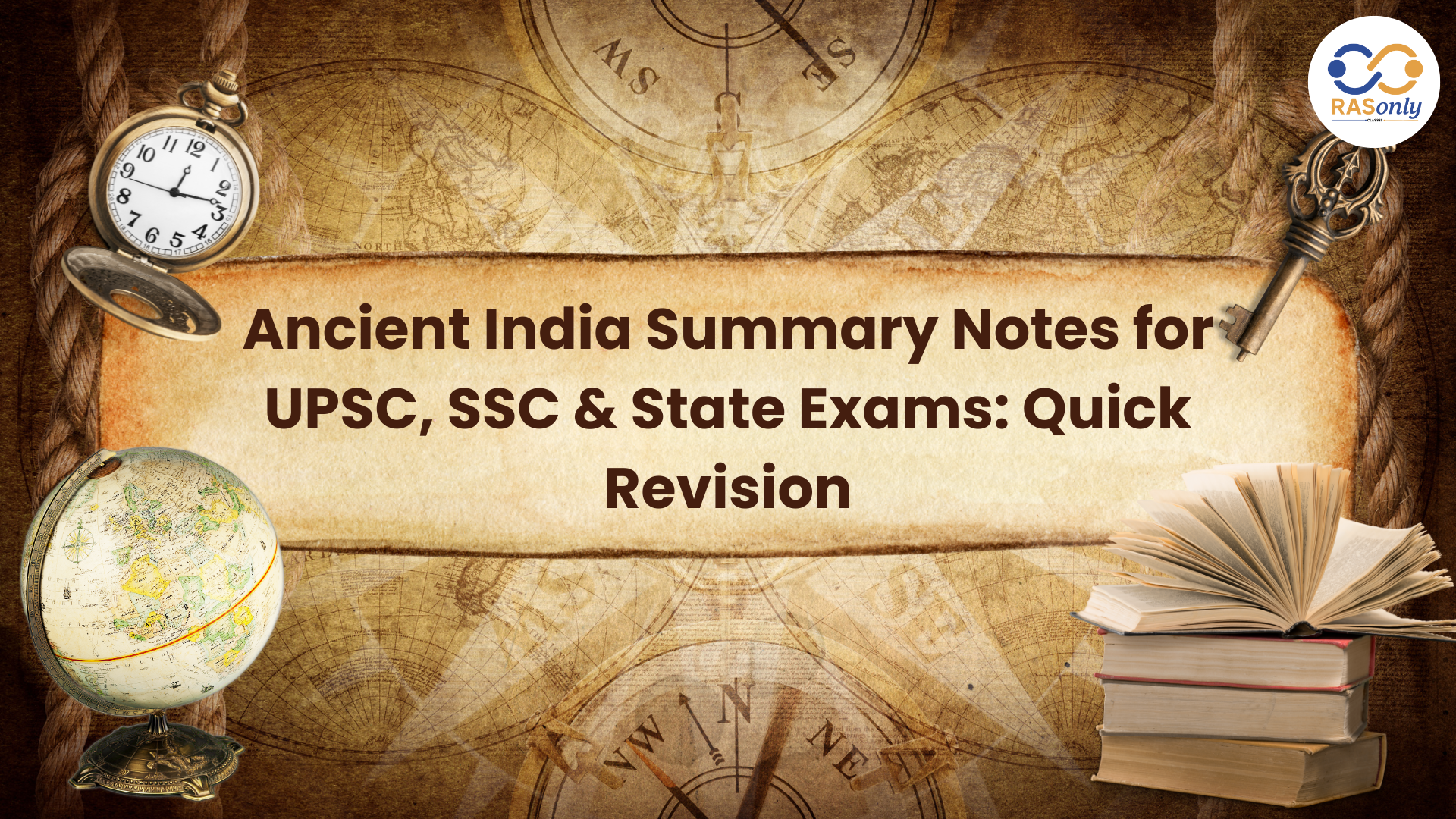
Ancient India Summary Notes are the vital notes that are needed by aspirants of UPSC, SSC, and state government-level exams. It is the basis of the Indian history of the chronicles of significant cultural, social, and political changes. These revision notes will assist you in learning all the necessary information you should know within the simplified structure, and last-minute preparation will become more efficient and even focused.
Ancient India Summary Notes: Prehistoric & Indus Valley Civilization
The first period in the history of India starts with prehistoric cultures and continues with a very impressive Indus Valley urban civilization. These Ancient India Summary Notes discuss the main characteristics of the Harappan cities, trade, social organization, and causes of decline, some of the aspects that are common in competitive exams.
✅ Prehistoric Period: Divided into Paleolithic, Mesolithic, and Neolithic ages
✅ Indus Valley Civilization (c. 2500–1900 BCE): Urban planning with grid layout and drainage
✅ Major cities: Mohenjo-Daro, Harappa, Lothal, Dholavira
✅ Advanced trade practices with Mesopotamia
✅ Use of standardized weights, seals, and undeciphered script
✅ No clear evidence of kings or temples; the economy is largely agrarian
✅ Decline theories: climate change, river shift, possible invasions
Ancient India Summary Notes: Vedic Age
The Vedic Age can be viewed as an important period in the cultural and religious progress of Ancient India. These notes on Ancient India underline the process of evolution of early pastoral society to settled rotations and stratification. It is further subdivided into the Early and Later Vedic period, which formed the basis of Hindu philosophy, customs, and the political structure.
✅ Early Vedic Period (c. 1500–1000 BCE): Aryan migration, Rigveda, pastoral economy
✅ Cattle as wealth; no formal kingdoms—tribal assemblies like Sabha and Samiti
✅ Later Vedic Period (c. 1000–600 BCE): Iron use, settled agriculture, large kingdoms
✅ Society divided into four varnas (Brahmin, Kshatriya, Vaishya, Shudra)
✅ Ritualistic worship and the growing power of priests
✅ Rise in patriarchal structure and decline in women’s status
✅ Political emergence of Janapadas and hereditary kingship
Ancient India Summary Notes: Mahajanapadas, Jainism & Buddhism
The 6th century BCE was the time when 16 Mahajanapadas or strong states appeared in India. These Ancient India Summary notes further center on two predominant religious movements, Jainism and Buddhism, that came to challenge Vedic orthodoxy and talk about non-violence, renunciation, and moral living, influencing the thinking of Indians over the centuries.
✅ Mahajanapadas: 16 major kingdoms, including Magadha, Kosala, and Avanti
✅ Magadha emerged as the most dominant due to strong rulers and fertile plains
✅ Jainism: Founded by Mahavira (24th Tirthankara); stressed Ahimsa and truth
✅ Five major vows: Non-violence, truth, non-stealing, celibacy, non-possession
✅ Buddhism: Founded by Gautama Buddha; preached the Four Noble Truths and the Eightfold Path
✅ Rejected caste system; focused on individual liberation through self-effort
✅ Spread through royal patronage (e.g., Ashoka) and monastic networks
Ancient India Summary Notes: Mauryan Empire
The Maurya Empire became the earliest and the largest political administration to consolidate a majority of the Indian sub-continent. Major rulers such as Chandragupta and Ashoka are the focus of these Ancient India Summary Notes, who were innovative administrators and morally good rulers. Economic reforms, centralized control, and artistic attainments were also witnessed during the Mauryan period.
✅ Founded in 322 BCE by Chandragupta Maurya with guidance from Chanakya (Kautilya)
✅ Capital: Pataliputra; centralized administration as described in Arthashastra
✅ Revenue system, espionage network, and road infrastructure
✅ Ashoka the Great: Expanded empire and later embraced Buddhism after the Kalinga War
✅ Promoted Dhamma and inscribed messages on rock and pillar edicts
✅ Spread of Buddhism to Sri Lanka and Central Asia
✅ Art: Mauryan polish, stone pillars, and Sanchi Stupa foundations
Ancient India Summary Notes: Post-Mauryan and Gupta Empire
Following the Mauryas, there was regional control and foreign domination of India until the Gupta Empire appeared. These Ancient India Summary Notes give a brief overview of the Kushanas and Satavahanas, and then the Gupta period, which was described as the Golden Age of ancient India due to the vast accomplishments of the period in fields of literature, science, and governance.
✅ Post-Mauryan Period: Rise of Indo-Greeks, Shakas, Kushanas, and Satavahanas
✅ Cultural exchanges via the Silk Route and the Gandhara art style
✅ Gupta Empire (c. 320–550 CE): Founded by Chandragupta I, peaked under Samudragupta and Chandragupta II
✅ Stable political structure, efficient administration, land revenue system
✅ Religious tolerance but patronage of Brahmanism
✅ Literature: Kalidasa, Puranas, classical Sanskrit works
✅ Science: Aryabhata (zero, astronomy), Sushruta (surgery), metallurgy
✅ Art: Ajanta & Ellora caves, classical sculptures, temples at Deogarh
Ancient India Summary Notes: Achievements of the Gupta Age
The Gupta era is remembered as a golden age of culture and intellectuality. The important accomplishments in the fields of science, literature, art, and governance in Ancient India under the Ancient India Summary Notes. These aspects of Sanskrit patronage by the empire, religious tolerance, and interest in astronomy and medicine left a lasting mark on both Indian and world history.
✅ Literature: Flourishing of classical Sanskrit; works of Kalidasa, Bhāsa, and Puranas
✅ Science & Math: Aryabhata introduced zero, the decimal system, and heliocentric ideas
✅ Medicine: Surgical techniques by Sushruta and medical treatises by Charaka
✅ Art & Architecture: Ajanta murals, Ellora caves, Dashavatara Temple (Deogarh)
✅ Religion: Support for Vaishnavism, Shaivism, and Buddhism
✅ Administration: Land grant system, decentralization, use of local governance
Ancient India Summary Notes: Socio-Economic and Religious Life
Summary Notes of Ancient India provide an understanding of the society and economy is important. This era was marked by rising caste distinctions, trade, and changing religious ideology. Although the Gupta era encouraged the ideas of Hindu revivalism, it also tolerated the Buddhist and Jain traditions, which reflected a wide-ranging and diverse culture.
✅ Social Structure: The Varna system became more rigid; women’s status declined
✅ Economy: Agriculture flourished; urban trade revived; gold and silver coins in use
✅ Guilds (Shrenis): Controlled trade, crafts, and artisan rights
✅ Religion: Rise of the Bhakti movement; temple culture grew
✅ Education: Nalanda and Takshashila as global learning centers
✅ Philosophy: Six schools (Shad-Darshanas), debates among Buddhists, Jains, and Brahmins
Conclusion
These Ancient India Summary Notes provide a vivid and concise presentation of the major historical periods that are vital to scores of history up to the state-level entrance exams. They also cover the Indus Valley, Vedic culture, Mauryan power, Gupta brilliance, and social-religious life, providing easy and efficient revision. Concentrated notes enable aspirants to remember facts, learn the context, and approach history questions with a lot of confidence, especially at the eleventh-hour studying.
FAQs
Post Category
- RAS Salary
- Result
- RAS Admit Card
- RAS Job
- RAS Cutoff
- Preparation Tips
- RAS Answer Key
- RAS Exam Analysis
- RAS Syllabus
- RAS Previous Year Papers
- RPSC RAS Exam Pattern
- RAS Interview
- RAS Mains Exam Date
- RAS Vacancy
- RAS Test Series
- RAS Best Books
- RAS Preparation Resources
- RAS Coaching Centre
- History
- Polity
- Geography
- Economics
- Science
- Art and Culture
- RPSC RAS Application Form
- RPSC RAS Notification
RASonly Interview Guidance Program

Mr. Ashok Jain
Ex-Chief Secretary Govt of Rajasthan
- IAS officer of the 1981 batch, Rajasthan cadre.
- Passionate about mentoring the next generation of RAS officers with real-world insights.
- Got retired in Dec 2017 from the post of Chief Secretary of the state of Rajasthan.

Mr. Guru Charan Rai
Ex-ASP / SP in Jaisalmer
- Guru Charan Rai, IPS (Retd), retired as Inspector General of Police (Security), Rajasthan, Jaipur in 2017.
- Served as ASP and SP in Jaisalmer, Nagaur, Sri Ganganagar, Sawai Madhopur, Dausa, Sikar, and Karauli.
- He also held key positions as DIGP and IGP in the Law and Order division.

Mr. Rakesh Verma
Ex-IAS Officer, B.Tech, MBA, and M.A. (Economics)
- IAS officer of the 1981 batch and retired in Chief Secretary Rank.
- Civil servant of high repute and vast experience.
- Has been teaching UPSC CSE subjects for the last six years.
Related Post
👉🏻 Register Today to Join Classes! 👍🏻
- Team RASOnly -
🎯 Benefits of RASOnly Coaching:
- ✅ 1:1 Mentorship with RAS Officers
- ✅ Experienced and Expert Faculty
- ✅ Free Library Access
- ✅ Daily Minimum 4 Hours Must
- ✅ Comprehensive Study Material
- ✅ Regular Tests & Performance Analysis
- ✅ Personalized Guidance & Doubt Solving
- ✅ Online & Offline Class Options
- ✅ Affordable Fees with Quality Education
Key Highlights:
- 👉🏻 3-Day Refund Policy
- 👉🏻 New Batch Starting from 04 August
- 👉🏻 Registration Amount: Only ₹1000

